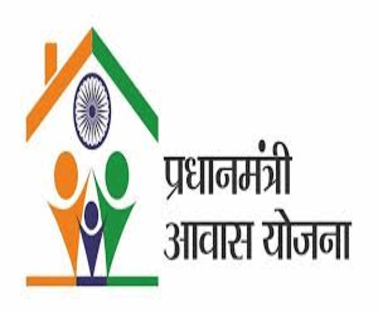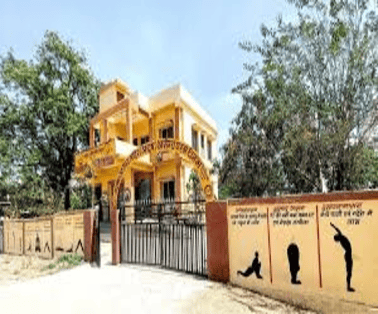Prime Minister Narendra Modi has approved a major housing initiative under the Pradhan Mantri Awas Yojana (PMAY), with plans to construct three crore new houses across rural and urban India. This announcement marks a significant step in achieving the government’s vision of Housing for All.
Key Highlights of the New PMAY Announcement
- 3 Crore Houses Approved: Out of the total, 2 crore homes will be built under PMAY-Gramin (PMAY-G) and 1 crore homes under PMAY-Urban (PMAY-U).
- Rural Housing Shortage: The government estimates a shortage of around 2 crore houses in rural areas and 30 lakh in urban regions.
- Historical Context: A study by ICRIER revealed that urban housing shortages rose by 54%, from 1.88 crore in 2012 to 2.9 crore in 2018.
- Prime Minister’s First Move: Upon beginning his third term, PM Modi also approved the release of the 17th instalment of PM Kisan Nidhi, showcasing his focus on rural welfare.
- Expansion of PMAY-G: The additional 2 crore houses under PMAY-Gramin will be over and above the 2.95 crore houses already sanctioned since 2016, of which 2.61 crore have been built.
- Budget 2024-25 Announcement: Finance Minister Nirmala Sitharaman had earlier proposed the construction of 2 crore more rural homes under PMAY-G over the next five years.
Overview of Pradhan Mantri Awas Yojana (PMAY)
Launched in 2015, Pradhan Mantri Awas Yojana is the flagship housing scheme of the Government of India, aiming to provide affordable housing for the urban and rural poor. It is implemented by:
- Ministry of Housing and Urban Affairs for urban areas
- Ministry of Rural Development for rural areas
PMAY has two main components:
- PMAY-Urban (PMAY-U)
- PMAY-Gramin (PMAY-G)
Pradhan Mantri Awas Yojana – Gramin (PMAY-G)
PMAY-Gramin is targeted at economically weaker families in rural India. Its aim is to provide pucca houses with essential amenities to those living in kutcha or dilapidated housing.
Key Features:
- Beneficiaries must have an annual income of up to ₹3 lakh (based on SECC 2011).
- Houses include basic infrastructure: electricity, water, sanitation, and sewage systems.
- Beneficiary-led construction with technical and financial support from the government.
- Prioritizes ownership by female members or jointly with male members of the family.
- Financial support ratio: 60:40 (Centre:States) in plain areas and 90:10 in northeastern and special category states.
Pradhan Mantri Awas Yojana – Urban (PMAY-U)
PMAY-Urban focuses on the urban poor, including slum dwellers, by promoting affordable housing in cities and towns.
Income-Based Categorization:
- Economically Weaker Section (EWS)
- Low-Income Group (LIG)
- Middle-Income Group (MIG)
Central Assistance and Benefits:
- ₹1.5 lakh for EWS and ₹1 lakh for LIG beneficiaries.
- Interest subsidies on home loans via the Credit Linked Subsidy Scheme (CLSS).
- Third-party quality monitoring with central financial support (shared 75:25 or 90:10 for NE/special states).
PMAY Housing Models and Subsidy Schemes
The Pradhan Mantri Awas Yojana offers four verticals for housing assistance:
- In-situ Slum Redevelopment (ISSR)
- Uses slum land as a resource to provide pucca houses to slum dwellers.
- Affordable Housing in Partnership (AHP)
- Public-private partnerships to build affordable housing for EWS/LIG/MIG categories.
- Credit Linked Subsidy Scheme (CLSS)
- Interest subsidy from 3% to 6.5% on home loans, depending on income and loan amount.
- Beneficiary-Led Construction (BLC)
- Central aid for individuals who wish to construct or enhance their own houses.
Financing Structure of PMAY
- Centre and State share: 60:40 for general areas, 90:10 for NE and special category states.
- 100% Central funding in Union Territories including Ladakh for PMAY-G.
Eligibility for Pradhan Mantri Awas Yojana
To qualify for PMAY benefits:
- Applicant should not own a pucca house in any part of India.
- Should not have previously received central/state assistance for housing.
- Age limit: up to 70 years.
- Priority is given to women ownership or joint ownership with male family members.
- CLSS is applicable only for EWS and LIG for self-construction or house improvement.
Challenges in PMAY Implementation
Despite its scale, Pradhan Mantri Awas Yojana faces several operational challenges:
- Scarcity of urban land and high cost of construction.
- Delays in approvals and coordination across multiple agencies.
- Limited awareness among potential beneficiaries.
- Quality concerns in construction.
- Integration issues with other urban development schemes.
Conclusion
The recent approval to build three crore houses under Pradhan Mantri Awas Yojana is a monumental step toward the government’s goal of “Housing for All”. With both rural and urban components, PMAY not only aims to reduce homelessness but also boost economic activity, especially in the construction and infrastructure sectors. Successful implementation will require greater coordination, awareness, and monitoring to ensure quality housing reaches every eligible citizen.
To Download Monthly Current Affairs PDF Click here
Click here to get a free demo
Discover all about CLAT Exam



